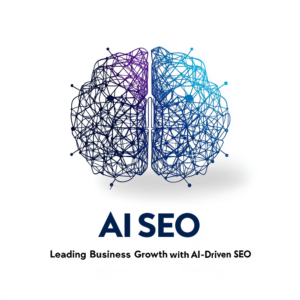In today’s digital landscape, the intersection of artificial intelligence and content creation has sparked a significant transformation in how businesses approach their online presence. As organizations increasingly turn to AI-generated content to enhance their marketing strategies,the implications for search engine optimization (SEO) are profound. While AI tools promise efficiency, scalability, and even creativity, thay also pose a unique set of challenges and risks that must be navigated with care. In this article, we’ll explore the dual facets of AI-generated content: the potential SEO benefits that can propel your site to new heights, and the pitfalls that could hinder your online visibility.Join us as we delve into this evolving frontier, equipping you with insights to harness AI’s power while safeguarding your digital strategy.
Table of Contents
- Understanding AI-Generated Content and Its Role in SEO
- Evaluating the SEO Benefits of Utilizing AI in Content Creation
- Identifying the Risks Associated with AI-Generated Content
- Best Practices for Integrating AI Content Without Compromising Quality
- In Retrospect
Understanding AI-Generated Content and Its Role in SEO
AI-generated content has surged into the spotlight as webmasters and marketers alike look to streamline their content strategies. This technology enables the rapid production of articles, blog posts, and other textual materials that can often align closely with specific SEO objectives. By leveraging algorithms, AI tools can analyze trending topics, keyword optimization, and user intent to deliver content that meets search engine criteria. Benefits include:
- Efficiency: Create high volumes of content quickly to fill gaps.
- Consistency: Maintain a uniform voice and style across various pieces.
- Keyword Optimization: Automatically incorporate relevant keywords to boost visibility.
however, despite the appealing advantages, ther are risks associated with reliance on AI-generated content. Search engines are progressively refining their algorithms to detect low-quality or duplicate material, which could hinder SEO performance if not properly managed. Additionally, the lack of a human touch in content creation may lead to a disconnect with the audience, potentially harming engagement rates. Key considerations include:
- Quality control: Human oversight is necessary to ensure factual accuracy and relevance.
- Authenticity: unique perspectives are frequently enough lost in AI-generated text.
- SEO Penalties: Risk of demotion in search engine rankings if content is deemed non-original.
Evaluating the SEO Benefits of Utilizing AI in Content Creation
AI-driven content generation offers a variety of SEO advantages that can considerably enhance online visibility and engagement. By utilizing machine learning algorithms, AI can analyze vast amounts of data to identify trending topics, optimal keyword placements, and user intent, allowing for the creation of content that resonates with target audiences.This tailored approach can lead to improved search engine rankings as content becomes more relevant and aligned with the specific interests of users.Additionally,AI tools are capable of producing content at scale,enabling marketers to consistently update their sites with fresh material—a key factor that search engines reward.
Though, the integration of AI in content creation is not without its risks. There are concerns regarding the quality and originality of AI-generated content. While these tools can produce coherent and appealing text, they frequently enough lack the nuanced understanding of human experience and culture that makes for truly engaging writing. Furthermore,over-reliance on AI may lead to content that seems formulaic or generic,which can negatively impact user engagement and trust. For effective implementation, a balance must be struck between leveraging AI capabilities and maintaining a human touch in content creation.
Identifying the Risks Associated with AI-Generated Content
The integration of AI-generated content into digital strategies is not without its pitfalls. One of the primary concerns is accuracy; AI tools can occasionally produce information that is misleading or factually incorrect. This can lead to a lack of credibility for the brand utilizing the content, potentially alienating customers who rely on trustworthy information. Additionally, the issue of originality arises. AI systems often pull from vast datasets, raising the risk of unintentional plagiarism or content that lacks unique voice and viewpoint. This can negatively impact a website’s SEO rankings, which prioritize fresh and original content.
Another significant risk lies in user engagement and emotional connection. AI-generated content may lack the nuanced understanding of human emotions and cultural contexts that a human writer possesses. As a result, it may fail to resonate with the audience, decreasing user engagement and increasing bounce rates. Furthermore, there’s the challenge of bias; AI systems can inadvertently perpetuate societal biases present in their training data, leading to content that may offend or misrepresent certain groups. Companies must be vigilant in reviewing AI-generated outputs to ensure they align with their branding and values, as failing to do so could result in reputational damage.
Best Practices for Integrating AI Content Without Compromising Quality
To successfully integrate AI-generated content while maintaining high quality, it is crucial to establish a clear framework for how the technology will be used. Begin by ensuring that any AI tool you employ is reputable and aligned with your content goals. This includes selecting AI solutions that offer customization options, thereby allowing you to refine the output according to your brand’s voice and style. Consider implementing the following strategies:
- Edit and review: Always have a skilled human editor review content generated by AI to ensure it meets your standards.
- Train the AI: Provide your AI model with a robust training set that reflects your brand’s tone and targeted audience.
- Set guidelines: Develop a set of content guidelines that outline acceptable topics, styles, and formats to guide the AI.
moreover, monitoring the performance and reception of AI content is essential in refining your approach. Utilize analytics tools to gauge engagement metrics such as bounce rates, time on page, and social shares, thereby determining the effectiveness of your AI-generated material. Maintaining a flexible strategy allows you to pivot as needed based on audience feedback. Consider the following metrics to track:
| Metric | Importance |
|---|---|
| Engagement Rate | Measures audience interaction with the content. |
| Conversion Rate | Determines effectiveness in driving desired actions. |
| SEO Rankings | Evaluates the visibility of content in search results. |
In Retrospect
As we conclude our exploration of AI-generated content and its implications for SEO, it’s clear that while the technology offers remarkable opportunities for enhancing online visibility and engagement, it is not without its challenges. Striking the right balance between leveraging AI capabilities and maintaining authentic, human-centric content is essential for long-term success.
As you navigate this evolving landscape, consider implementing AI thoughtfully, ensuring that your content not only meets search engines’ optimization criteria but also resonates with your audience. Stay informed about emerging trends, ethical considerations, and best practices to harness the full potential of AI while minimizing risks.
in the dynamic world of digital marketing, adaptability is key.By integrating AI-generated content intelligently into your strategy, you can position yourself ahead of the curve and build a robust online presence. Remember, the future of content creation is not solely machine-driven; it also thrives on creativity, context, and connection.
Thank you for joining us on this journey into the realm of AI and SEO. For more insights, tips, and strategies on navigating the digital landscape, be sure to subscribe to our blog and stay updated. Happy optimizing!


